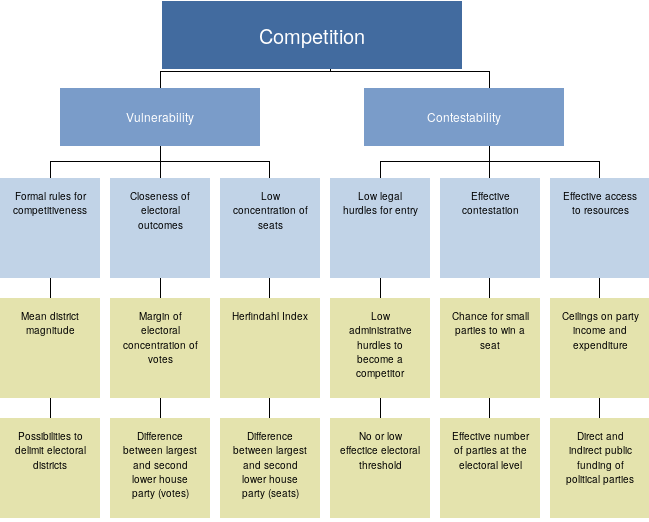Competition
Vertical control of the government is established via free, regular, and competitive elections. Four components of democratic competition can be distinguished, two of which - vulnerability (component 1) and contestability (component 2) - best fit our middle-range concept of democracy and our idea of vertical control. Vulnerability corresponds to the uncertainty of the electoral outcome, which is indicated by the closeness of election results as well as the degree of concentration of parliamentary or legislative seats. Furthermore, formal rules have an impact on vulnerability: district size and the legal possibility of redistricting can influence competition. Contestability refers to the stipulations that electoral competitors have to meet in order to be allowed to enter the race. The effective competition in elections is measured by the existence and the success of small parties. Effective entry equals the total number of parties running for elections as well the ratio of parties who gain parliamentary seats.
